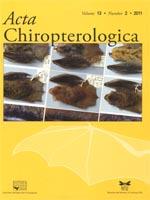I analysed bat fatalities reported from 56 wind farms in the La Rioja, Soria and Aragón regions of northern Spain. Post-construction monitoring surveys revealed 147 fatalities belonging to seven species of bats, namely Pipistrellus pipistrellus (59%), P. kuhlii (14%), Hypsugo savii (18%), Barbastella barbastellus, Nyctalus lasiopterus, N. leisleri and Tadarida teniotis (< 5% each). In the mostly low elevations sites in Aragon, fatalities occurred between March and December and peaked (76%) from July to October. In La Rioja and Soria, where wind farms mostly are located at higher elevations, fatalities occurred between May and October and without any obvious late summer peak. The reports reviewed here revealed many deficiencies in their protocols that prevent comparisons with other studies nationally and internationally. For example, only five reports (9%) accounted for searcher efficiency or carcass removal biases. Consequently, fatality estimates appeared to be negatively associated with the number of turbines in the wind farm and also with the monitoring frequency, so that fewer bats seem to be killed when the monitoring intervals were longer. This should be of considerable concern for environmental authorities in Spain and elsewhere. Despite rapid development of wind power facilities in Spain, the impact surveys that are carried out at present are clearly inadequate with respect to bats.
How to translate text using browser tools
1 June 2012
Bat Fatalities at Wind Farms in Northern Spain — Lessons to be Learned
Álvaro Camina
ACCESS THE FULL ARTICLE

Acta Chiropterologica
Vol. 14 • No. 1
June 2012
Vol. 14 • No. 1
June 2012
bats
environmental impacts
monitoring
mortality
shortfalls
Spain
wind farms




